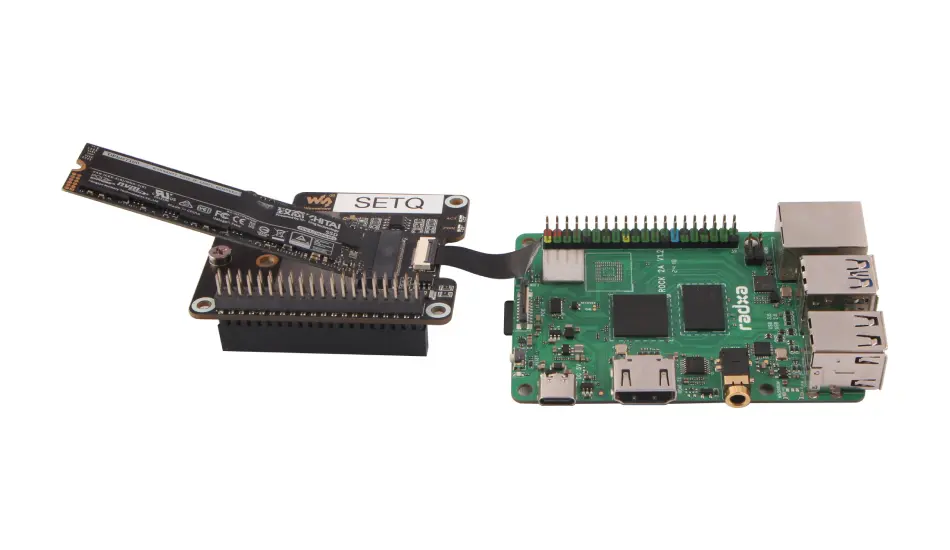PCIe Interface
- Connecting a PCIe Device (using a PCIe to M.2 adapter as an example)
Connect the PCIe to M.2 adapter as shown in the diagram, and insert the SSD.

-
Enable Overlay
- Open the Kconsole terminal and run the rsetup command:
$ rsetup
- Through [Device Tree Configuration]to enable the "Enable PCIe" overlay.
tipPlease enable the [] Enable PCIeoverlay item.
After successfully enabling [*] Enable PCIe, exit and reboot to apply the configuration.- Reboot the system.
-
Testing
- The SSD device can be recognized.
$ lsblk
...
nvme0n1 259:0 0 953.9G 0 disk
├─nvme0n1p1 259:1 0 16M 0 part
├─nvme0n1p2 259:2 0 300M 0 part
└─nvme0n1p3 259:3 0 953.5G 0 part
...- Reading the Device
# dd if=/dev/nvme0n1 of=/dev/zero bs=1M count=2048 status=progress
2100297728 bytes (2.1 GB, 2.0 GiB) copied, 5 s, 420 MB/s
2048+0 records in
2048+0 records out
2147483648 bytes (2.1 GB, 2.0 GiB) copied, 5.94583 s, 361 MB/s- Writing to the Device
# dd if=/dev/zero of=/dev/nvme0n1 bs=1M count=2048 status=progress
2098200576 bytes (2.1 GB, 2.0 GiB) copied, 6 s, 350 MB/s
2048+0 records in
2048+0 records out
2147483648 bytes (2.1 GB, 2.0 GiB) copied, 7.66734 s, 280 MB/s
tip
If the PCIe function is enabled on the ROCK 2A, the USB 3.0 OTG/HOST PORT can only be used as a USB 3.0 OTG/HOST PORT.